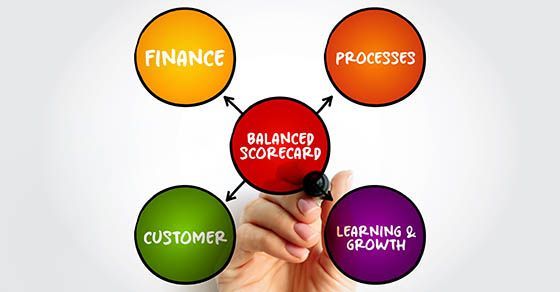December 11, 2025
The One Big Beautiful Bill Act (OBBBA) creates new income tax deductions for tax years 2025 through 2028 for qualified cash tips and overtime compensation. If you receive tips or overtime pay, you likely have questions about whether you’re eligible for a deduction and how big it might be. The IRS has issued guidance on how workers can determine the amount of their deductions for 2025, because employers aren’t required to provide detailed information on tips income or overtime compensation until the 2026 tax year. Here’s an overview of what you need to know. The new deductions Rather than eliminating taxes on all tips income and overtime compensation, the OBBBA establishes partial deductions available to both itemizers and nonitemizers, subject to income-based limitations. Qualified tips income and overtime compensation remain subject to federal payroll taxes and state income and payroll taxes where applicable. Moreover, because the tax breaks are in the form of deductions claimed at tax time, employers must continue to withhold federal income taxes from employees’ paychecks. For qualified tips, you may be able to claim a deduction of up to $25,000. “Qualified tips” generally refers to cash tips received by an individual in an occupation that customarily and regularly received tips on or before December 31, 2024. The tips must be paid voluntarily, without any consequence for nonpayment, in an amount determined by the payor and without negotiation. Proposed IRS regulations identify 68 eligible occupations within the following categories: Beverage and food service, Entertainment and events, Hospitality and guest services, Home services, Personal services, Personal appearance and wellness, Recreation and instruction, and Transportation and delivery. The tips deduction begins to phase out if your modified adjusted gross income (MAGI) exceeds $150,000, or $300,000 if you’re married filing jointly. The deduction is completely phased out if your MAGI reaches $400,000, or $550,000 if you’re a joint filer. The overtime deduction is limited to $12,500, or $25,000 if you’re a joint filer. A phaseout begins if your MAGI exceeds $150,000, or $300,000 if you’re a joint filer. The deduction is completely phased out if your MAGI reaches $275,000, or $550,000 if you’re a joint filer. The overtime deduction is available for overtime pay required by the Fair Labor Standards Act (FLSA), which generally mandates “time-and-a-half” for hours that exceed 40 in a workweek. Notably, though, the deduction applies only to the pay that exceeds the regular pay rate — that is, the “half” component. Because the FLSA definition of overtime varies from some state law definitions, overtime pay under state law might not be deductible. And the deduction doesn’t apply to overtime paid under a collective bargaining agreement or that an employer pays in excess of time-and-a-half (for example, double-time). The tips deduction calculation Employers won’t be required to include the total amount of cash tips reported by the employee and the employee’s occupation code on Form W-2 until the 2026 tax year. So, for 2025, according to the IRS, if you’re an employee, you can calculate your tips deduction using: Social Security tips reported in Box 7 of Form W-2, The total amount of tips you reported to your employer on Forms 4070, “Employee’s Report of Tips to Employer,” or similar forms, or The total amount of tips your employer voluntarily reports in Box 14 (“Other”) of Form W-2 or a separate statement. You may also include any amount listed on Line 4 of the 2025 Form 4137, “Social Security and Medicare Tax on Unreported Tip Income,” filed with your 2025 income tax return (and included as income on that return). Note that you’re responsible for determining whether the tips were received as part of an eligible occupation. If your employer opts to provide this or other relevant information in Box 14 (“Other”) of Form W-2, you may rely on it. Tips also won’t be required to be reported on Forms 1099 until the 2026 tax year. For 2025, if you’re an independent contractor, you can corroborate the calculation of your qualified tips with: Earnings statements, Receipts, Point-of-sale system reports, Daily tip logs, Third-party settlement organization records, or Other documentary evidence. Note: Nonemployees must confirm that their tips were received from an eligible occupation. The overtime deduction calculation Employers won’t be required to include eligible overtime pay on Form W-2 until the 2026 tax year. So for 2025, if you’re an employee, you can self-report your overtime compensation for the overtime deduction. According to the IRS, you must make a “reasonable effort” to determine whether you’re considered to be an FLSA-eligible employee. The IRS says this may include asking your employers or other service recipients about your FLSA status. To calculate the deduction amount, you must use “reasonable methods” to break out the amount of overtime pay that qualifies. For example, if you were paid time-and-a-half and receive a statement with your total amount for overtime (regular wages plus the overtime premium), then you can use one-third of the total. If you were paid double-time and receive such a statement, you can multiply the total dollar amount by one-fourth to compute the qualifying overtime pay. A tax-saving opportunity If you might be eligible for the tips or overtime deduction, don’t miss out on this tax-saving opportunity just because your deduction may be difficult to calculate. We’re here to help. If you’re an employer with employees who receive tips or overtime income, we can also provide guidance on how to answer employee questions for 2025 and how to ensure you’re in compliance with reporting requirements for 2026. © 2025










